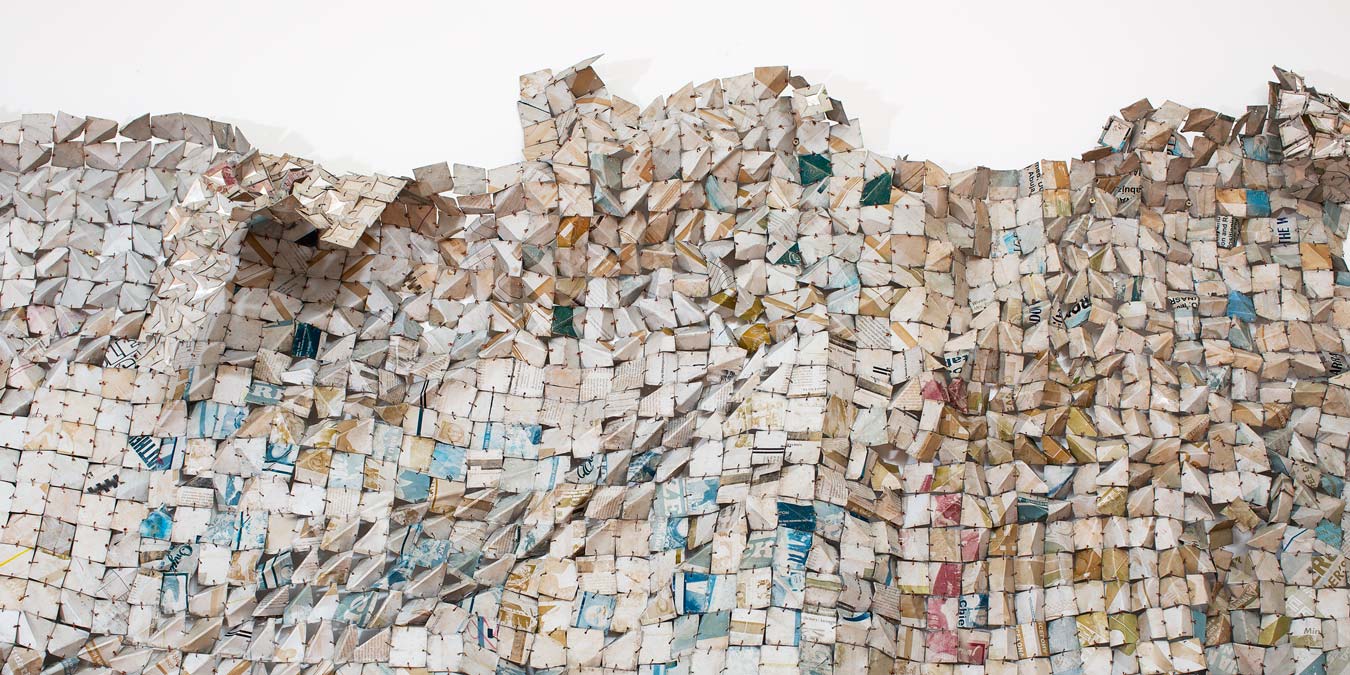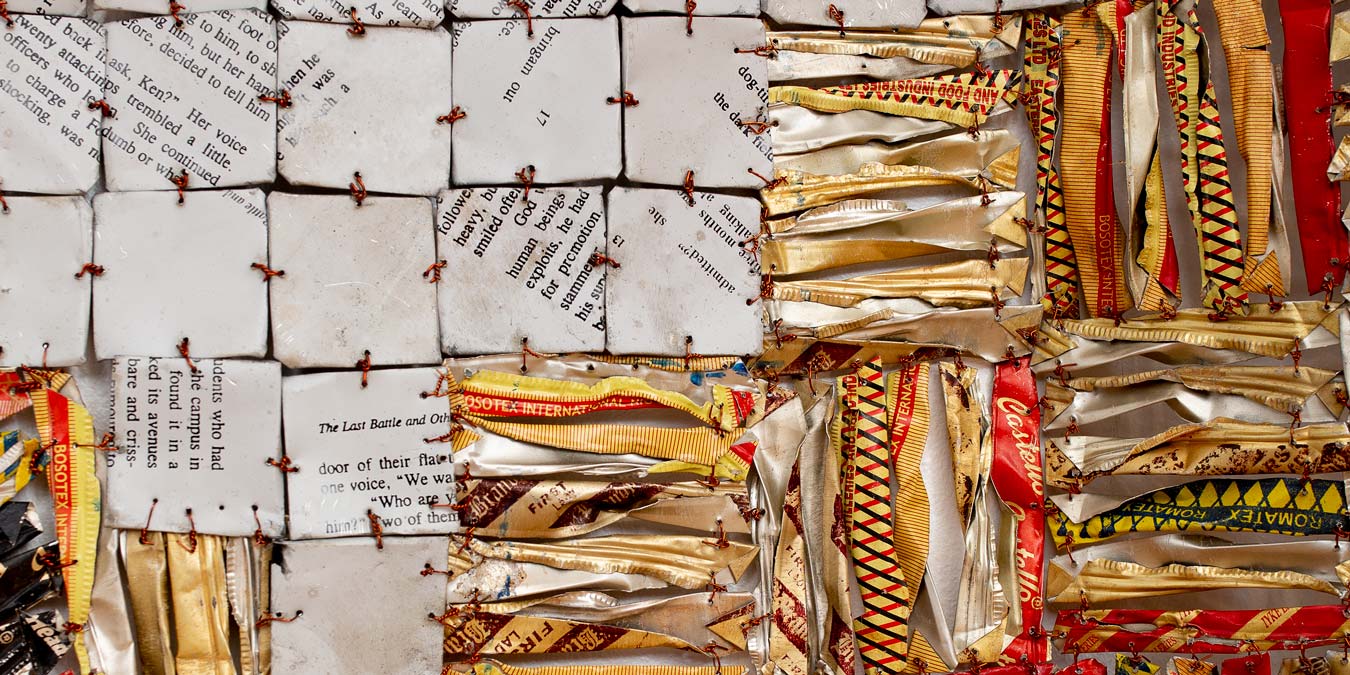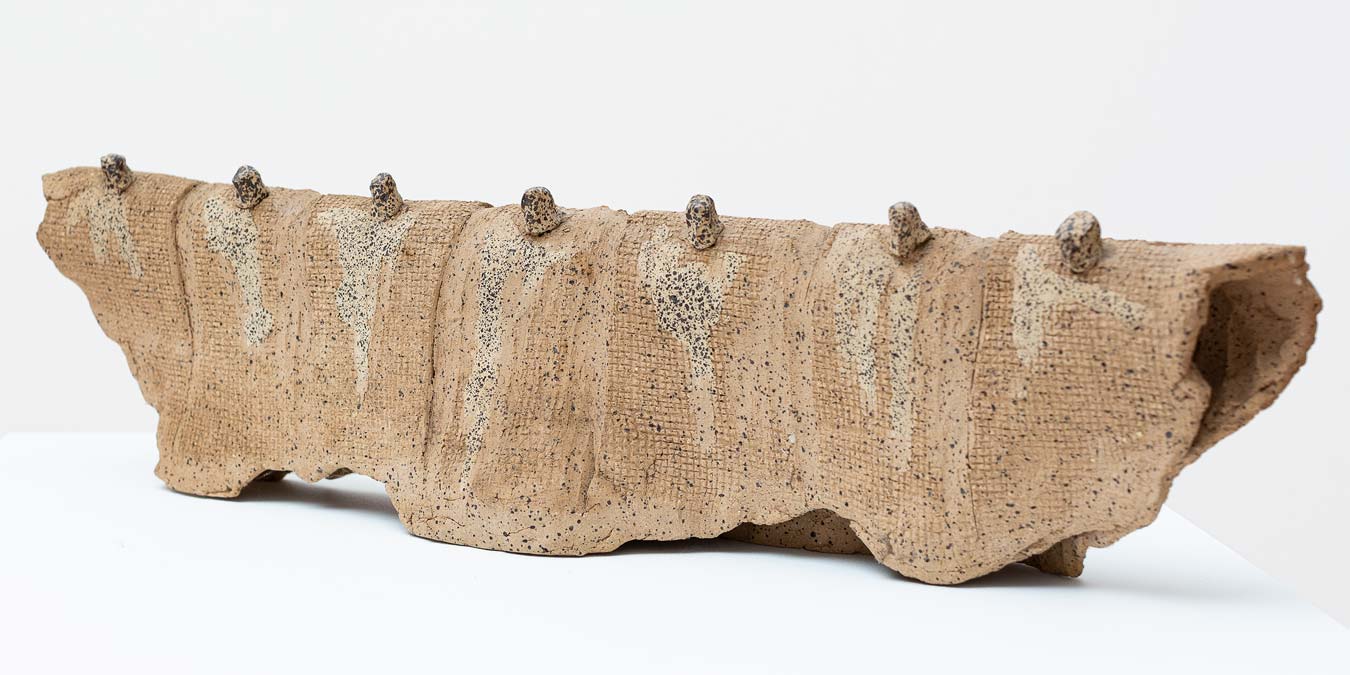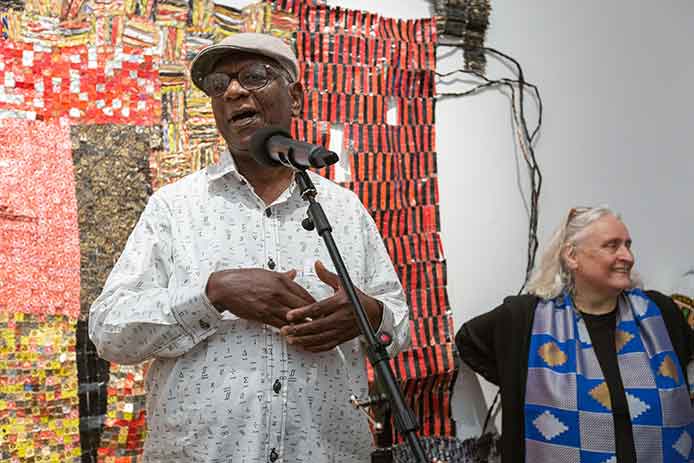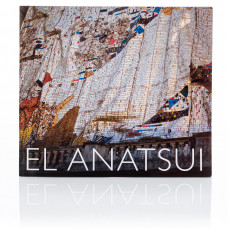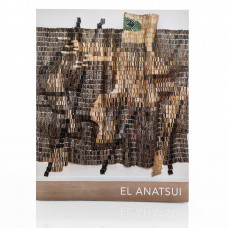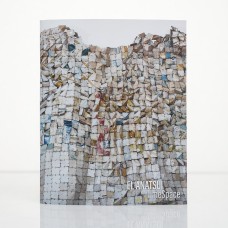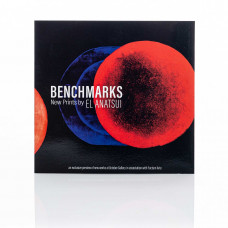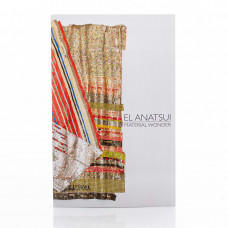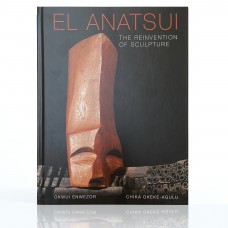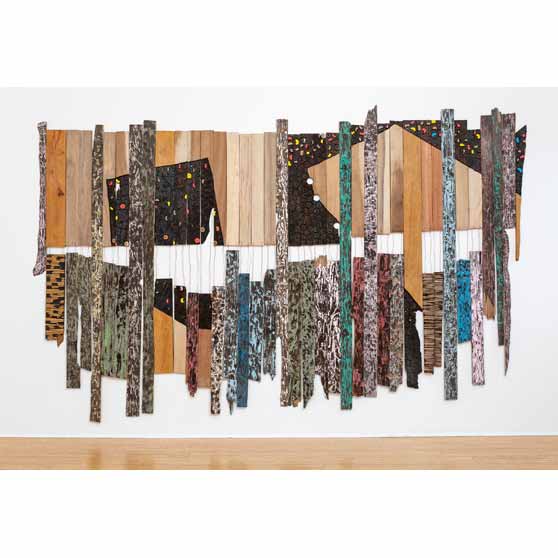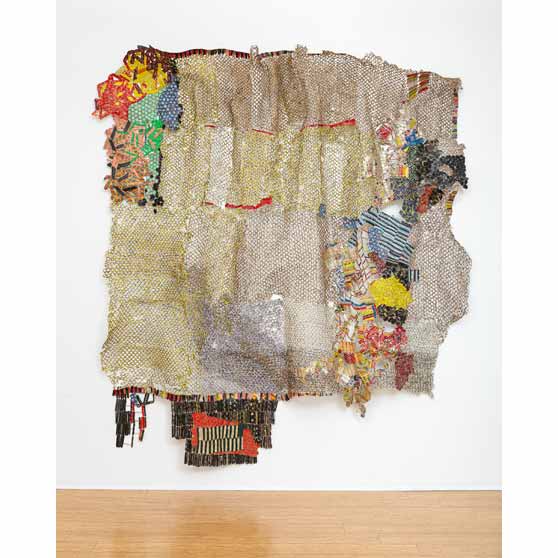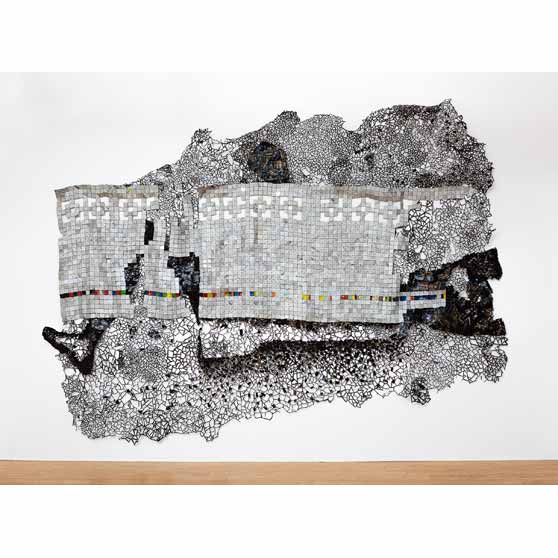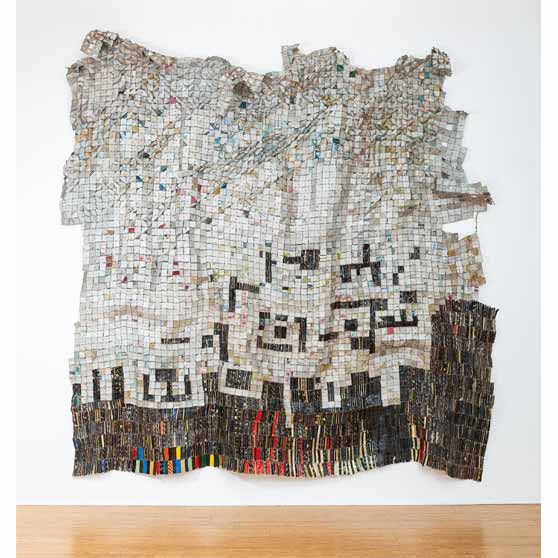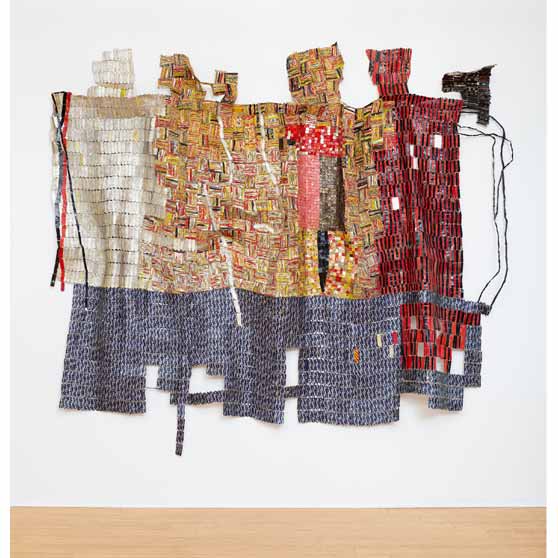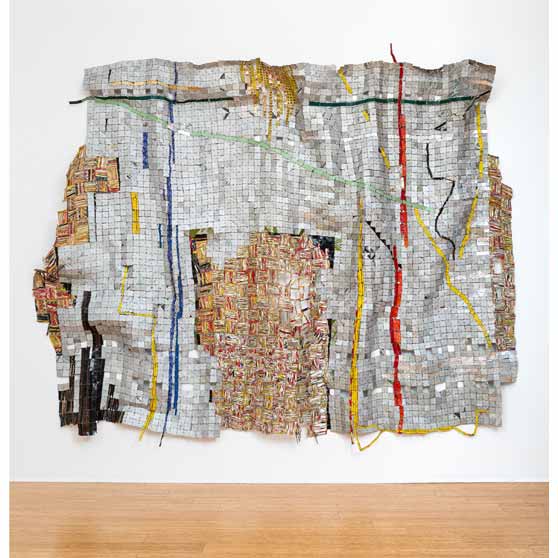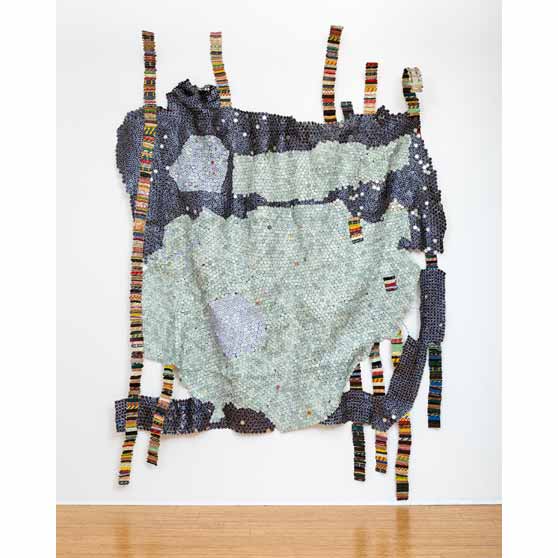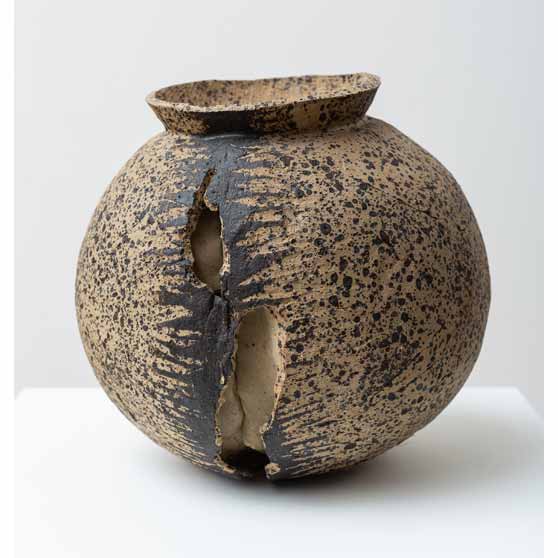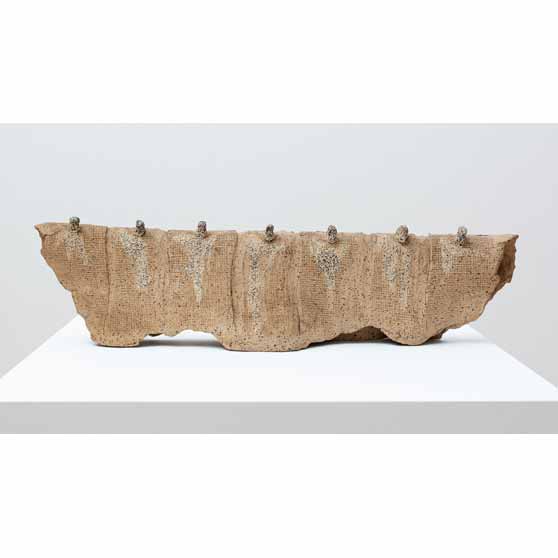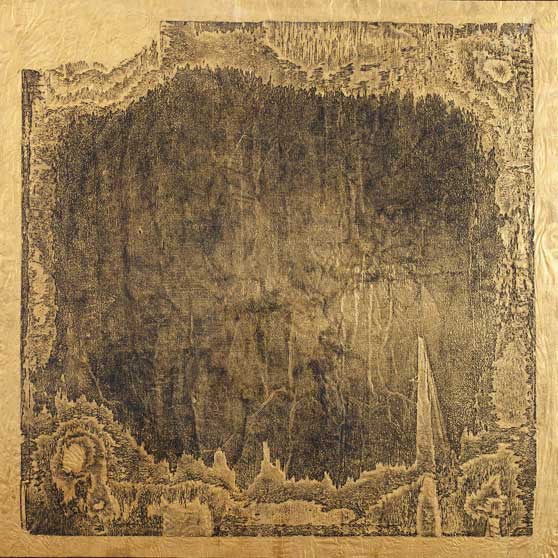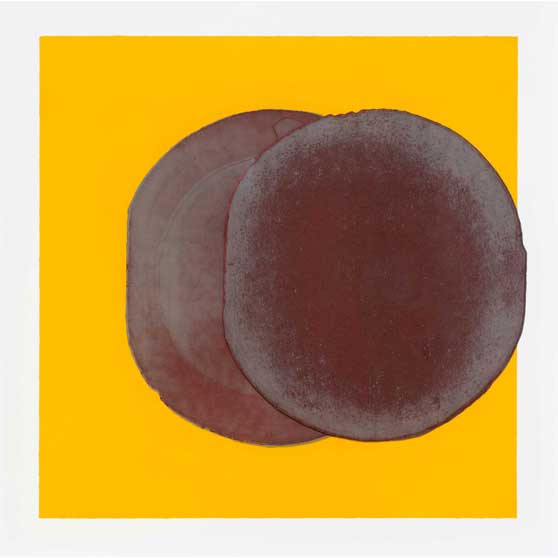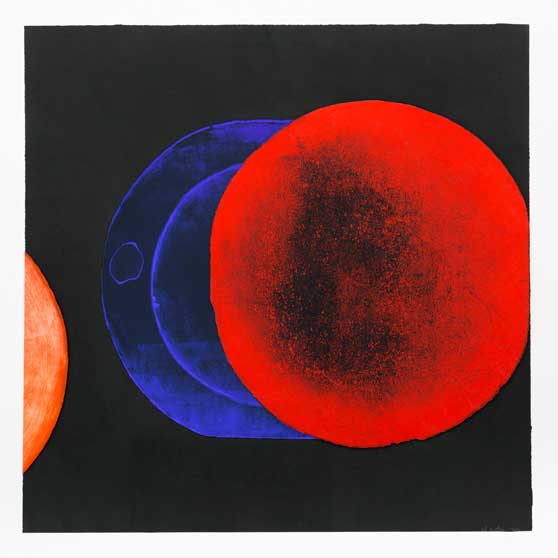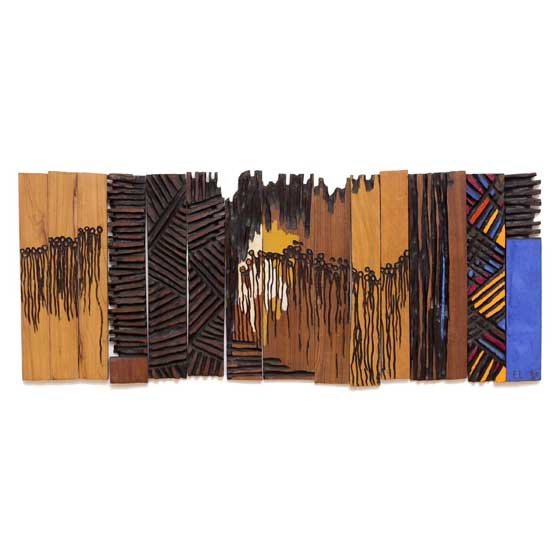EL ANATSUI: TimeSpace
11 October 2023 – 13 January 2024
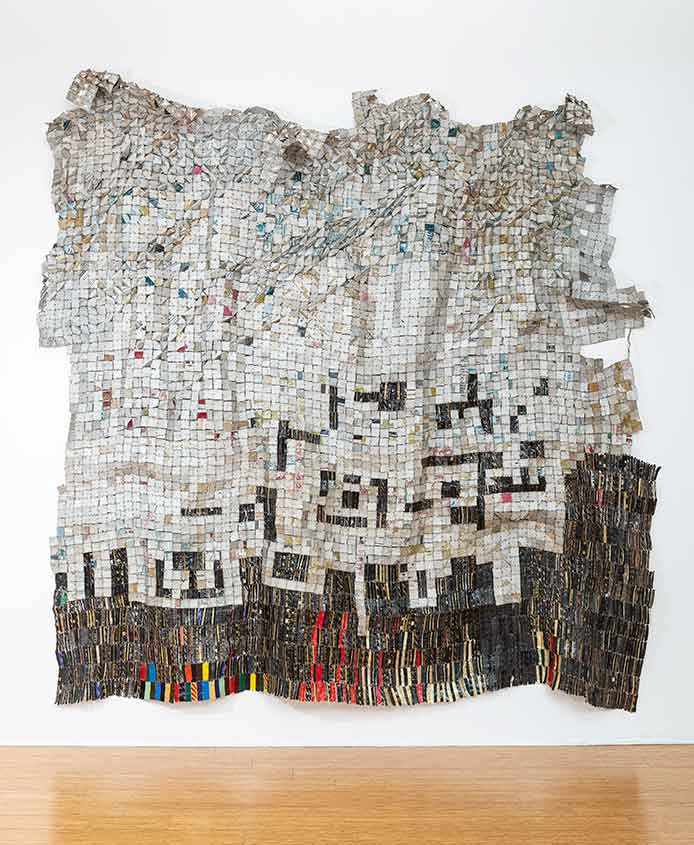
Aluminium and copper wire, 386 x 282 cm.
Photos: Jonathan Greet
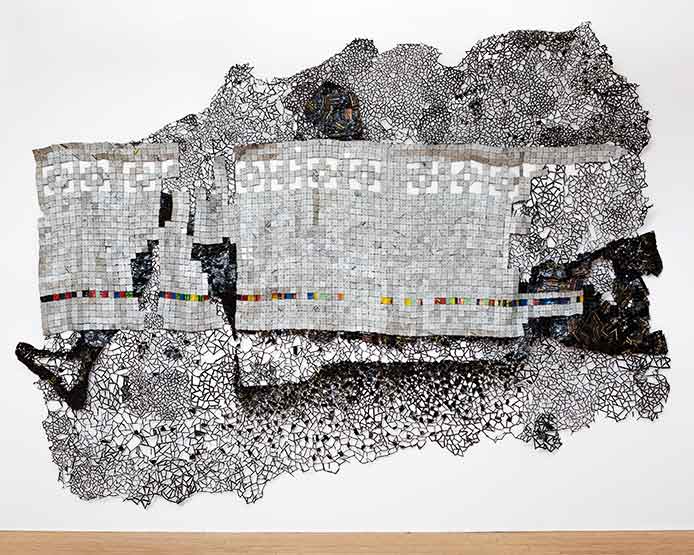
Aluminium and copper wire, 358 x 475 cm.
The exhibition at October Gallery will be an intimate show of new works alongside examples of earlier works that give insight, add context and help explain the development of this hugely influential artist. TimeSpace combines new bottle-top wall sculptures together with several earlier works engaging with other materials and different processes
During the late 80s and 90s, El Anatsui was known chiefly for his wooden wall reliefs — situated in between sculpture and painting — composed of slats of tropical hardwoods, cut, scored, and gouged by the chain saw amongst other power tools. The resulting surface markings and engraved symbols would be highlighted by flashes of colour or charred with a blow torch before the pieces were mounted side-by-side as eloquent wall-hanging compositions. Larger free-standing sculptures were made of abandoned wooden mortars or whole tree-trunks, whose surfaces were decorated with African scripts as with the powerful Monument (1995), carved with Adinkra symbols, on display in the Gallery courtyard. These early wooden sculptures find many echoes in the later bottle-top hangings. Always fascinated by the transformations undergone by the materials he uses, in 2016, El Anatsui sent a series of wooden boards, punctured by his studio assistants in the process of piercing bottle-tops, to Factum Arte’s studios in Madrid. These boards were first 3D scanned before the resulting textural information was routed onto aluminium plates and printed through an etching press. Thus, the scars and markings created by chance became accessible to black and coloured inks, delighting El Anatsui as he witnessed the emergence of these intriguing prints that reproduced the random puncture-marks recorded on the wooden blocks. The circular prints, when overlapped, reminded him of a lunar eclipse, suggesting a title for the first completed series of thirteen prints, which he named The Eclipse Suite after the thirteen cycles of the moon each year.
This exhibition of predominately contemporary works explores the artist’s innovative and experimental approach to tools, processes and materials. Taking a long-perspective view of his extraordinary career, the exhibition examines the way El Anatsui has, for decades, developed surprising and novel directions that have brought about an unexpected synthesis between African and Western practices. In so doing he has reshaped and profoundly affected the direction of contemporary sculpture, as acknowledged by the Golden Lion awarded to him in 2015 for his lifetime of achievement in the arts. El Anatsui’s sophisticated and deftly organised sculptures represent an original and unique synthesis of the diverse histories of African art with selected influences appropriated from the paradigms of contemporary Western practice.
El Anatsui is this year’s artist for the Hyundai Commission at Tate Modern’s Turbine Hall, which will open to the public 10th October.


